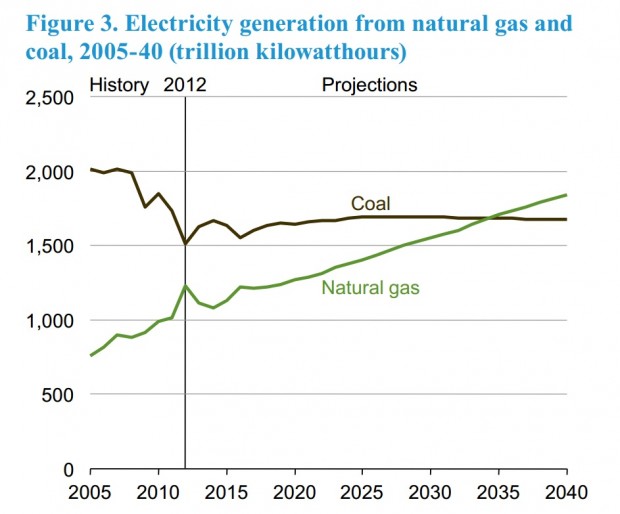Feds forecast natural gas will dethrone king coal as source of electric power
-
Marie Cusick
Natural gas is projected to surpass coal as the dominant source of U.S. electric power generation in the coming decades, according to a new federal report.
By 2040, natural gas will account for 35 percent of total electric generation, while coal will supply 32 percent.
The forecast comes from an early overview of the Energy Information Administration’s Annual Energy Outlook. The EIA is the statistics arm of the Department of Energy. The report predicts national energy trends through 2040, with the assumption that current laws and regulations remain relatively unchanged throughout that time period.
“Ongoing improvements in advanced technologies for crude oil and natural gas production continue to lift domestic supply and reshape the U.S. energy economy,” the authors write.
Domestic crude oil production is now approaching historical highs of 9.6 million barrels per day, last seen in 1970, according to the report.
The EIA predicts domestic crude oil production will level off, then slowly decline after 2020. Meanwhile, natural gas production will continue to grow considerably– with a 56 percent increase between 2012 and 2040.
Pennsylvania is at the center of this changing energy landscape. According to recent EIA estimates, the Marcellus Shale is estimated to provide 18 percent of U.S. gas production this month.
The price of natural gas will go up, according to the report. First, due to near-term growth in the industrial and power generation sectors, then later by increases in liquefied natural gas (LNG) exports.
The EIA predicts the Henry Hub spot natural gas price will reach $4.80 per million Btu by 2018– that’s 77 cents higher than what they expected last year. It’s about 60 cents higher than current prices.
The DOE has approved five new licenses for LNG export facilities, including a proposal to convert Dominion Resource’s Cove Point, Maryland import terminal into an export facility. It’s the closest location to the Marcellus Shale.


















